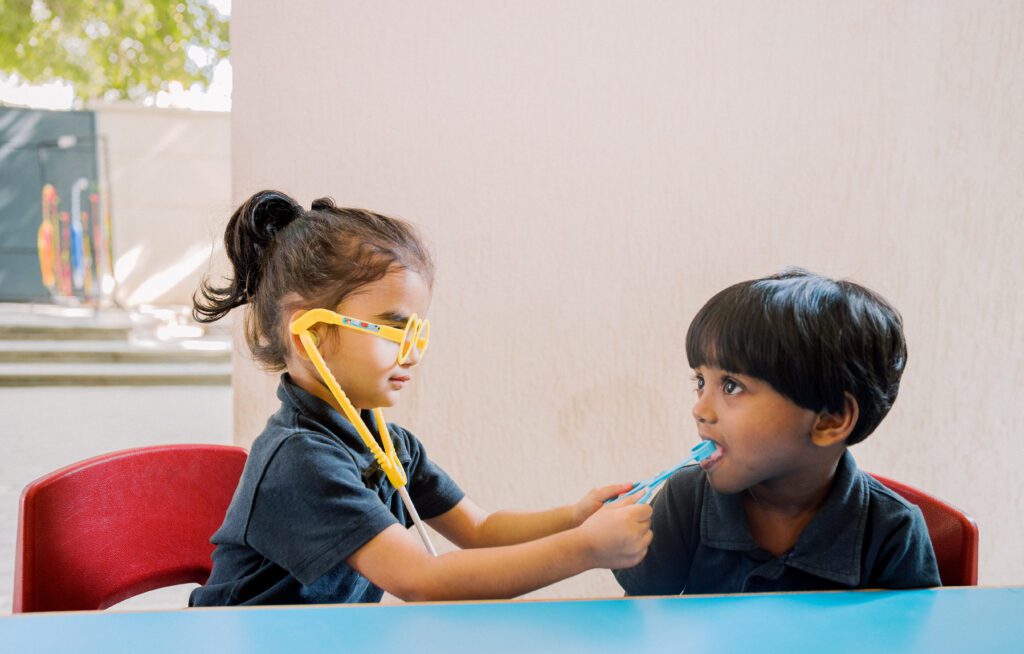If you’ve ever wondered whether there’s more to teaching young learners than just following the curriculum, you’re onto something big. Today, we are diving deep into purpose-based learning—an approach that might just revolutionise Early Years education by connecting classroom learning with real-world applications. This new approach to learning is practised at Ekya NAVA, where newfound technology and modern tools, along with their research-driven curriculum makes learning a fun and engaging experience.
What is Purpose-Based Learning?
In essence, purpose-based learning involves designing classroom activities that are meaningful to students and linked directly to real-life contexts.
Purpose-based learning when introduced at an early age blends cognitive skills with emotional and practical experiences, aiming to make learning a comprehensive process that excites and engages learners at every turn.
Classrooms at Ekya NAVA are thoughtfully-curated spaces where children get to explore and engage with real-life elements, establishing a connection with nature. Their curriculum includes learning areas like life skills that equips students with the essential tools they need to thrive in a constantly changing world.

Benefits of Purpose-Based Learning in Early Year Classroom
Purpose-based learning isn’t just a lofty ideal; it has concrete benefits for young learners. It enhances engagement and helps them see the relevance of their lessons through practical applications. Research shows that when children understand how learning relates to their lives, they’re more motivated and enthusiastic about exploring new concepts. Let us explore Ekya NAVA’s take on purpose-based learning and explore its benefits.
Key Strategies for Implementing Purpose-Based Learning:
- Writing Integration: Making daily writing tasks part of the classroom routine helps children connect with the written word in meaningful ways. For example, by writing their names and creating signs or labels, they learn the importance of text in everyday life.
- Promoting Inquiry and Reflection: Encourage children to think about and discuss their learning experiences. The Quest curriculum at Ekya NAVA’s Early Years program cultivates an inquisitive mindset, encouraging students to explore and ask “Why?”

- Creating a Purposeful Classroom Environment: Setting up a classroom that encourages purposeful learning might involve different zones for various activities—each designed to incorporate elements of purpose-based learning. Ekya NAVA offers a purposeful classroom environment with its pathways- their Design and Maker labs that foster creativity, empathy, sustainability, and problem-solving skills to encourage students to impact the world around them positively
- Challenges and Considerations: Adopting this educational approach can be challenging. It requires thoughtful integration into existing curriculums and may demand more preparation and creativity from teachers. However, implementation can result in benefits like increased student engagement and deeper learning.
Purpose-based learning has the potential to transform early education, making it more relevant, engaging, and enjoyable for young learners. By integrating real-world applications into daily lessons, educators can ignite curiosity and foster a lifelong love of learning in their students. By integrating real-world applications
